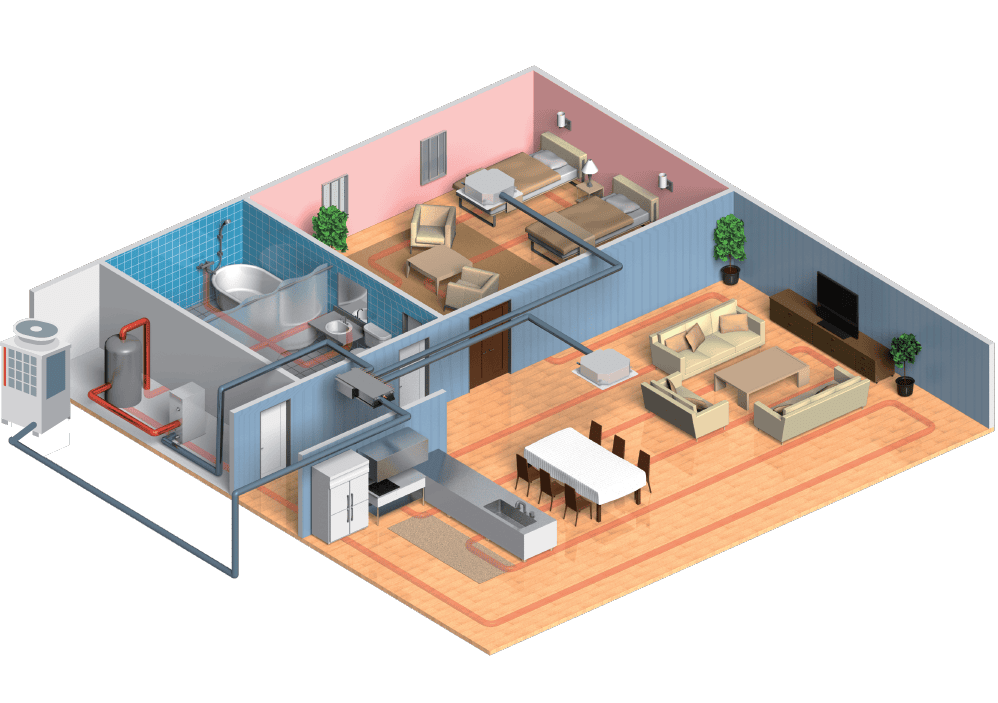- HeatingHeating Services
- Air ConditioningAir Conditioning Services
- Heat PumpHeat Pump Services
- ElectricalElectrical Services
- About
When it comes to cooling your home, selecting the right air conditioning system is crucial for both comfort and efficiency.
If you want the short answer to the question “Central AC vs Mini Split”, the simplified answer is that if you have duct work in your home, central AC is typically the easiest route to add whole house cooling. If you have no ductwork in your home, are looking to condition a specific area or move away from a boiler/radiant system, mini splits are likely the best choice for your home.
We will briefly look at the most important facts about Central air conditioning systems and mini split (or ductless) systems below.

Central air conditioning systems are the most common type of cooling system found in homes with existing ductwork. These systems work by circulating cool air through a network of ducts to distribute it evenly throughout the house. Let’s take a closer look at the advantages and disadvantages of central AC systems.
Mini-split or ductless systems offer a flexible and energy-efficient alternative to central air conditioning. These systems consist of an outdoor unit connected to one or more indoor units, allowing for targeted cooling in specific areas of the home. Let’s explore the advantages and disadvantages of mini-split systems.
If you’re deciding on central AC vs Mini-Split, UniColorado Heating & Cooling is the best choice in the Denver area for expert installation and maintenance. Our skilled technicians are experienced in working with both types of systems, ensuring that your home remains comfortable and energy-efficient.
At UniColorado Heating & Cooling, we understand the importance of a smooth and efficient installation process. Our team works diligently to provide a stress free and fast experience, minimizing disruption to your home and daily routine.
Our technicians undergo extensive training and stay up-to-date with the latest advancements in air conditioning technology. When you choose UniColorado Heating & Cooling, you can trust that you are working with the most knowledgeable and skilled professionals in the industry.
Both central air conditioning and ductless mini-split systems have their pros and cons. The best choice for your home depends on factors such as your cooling needs, existing infrastructure, and personal preferences. UniColorado Heating & Cooling is your go-to expert for both types of systems in the Denver area, offering unmatched expertise and a painless, fast installation process.
Contact us today to discuss your air conditioning options and find the perfect solution for your home.
